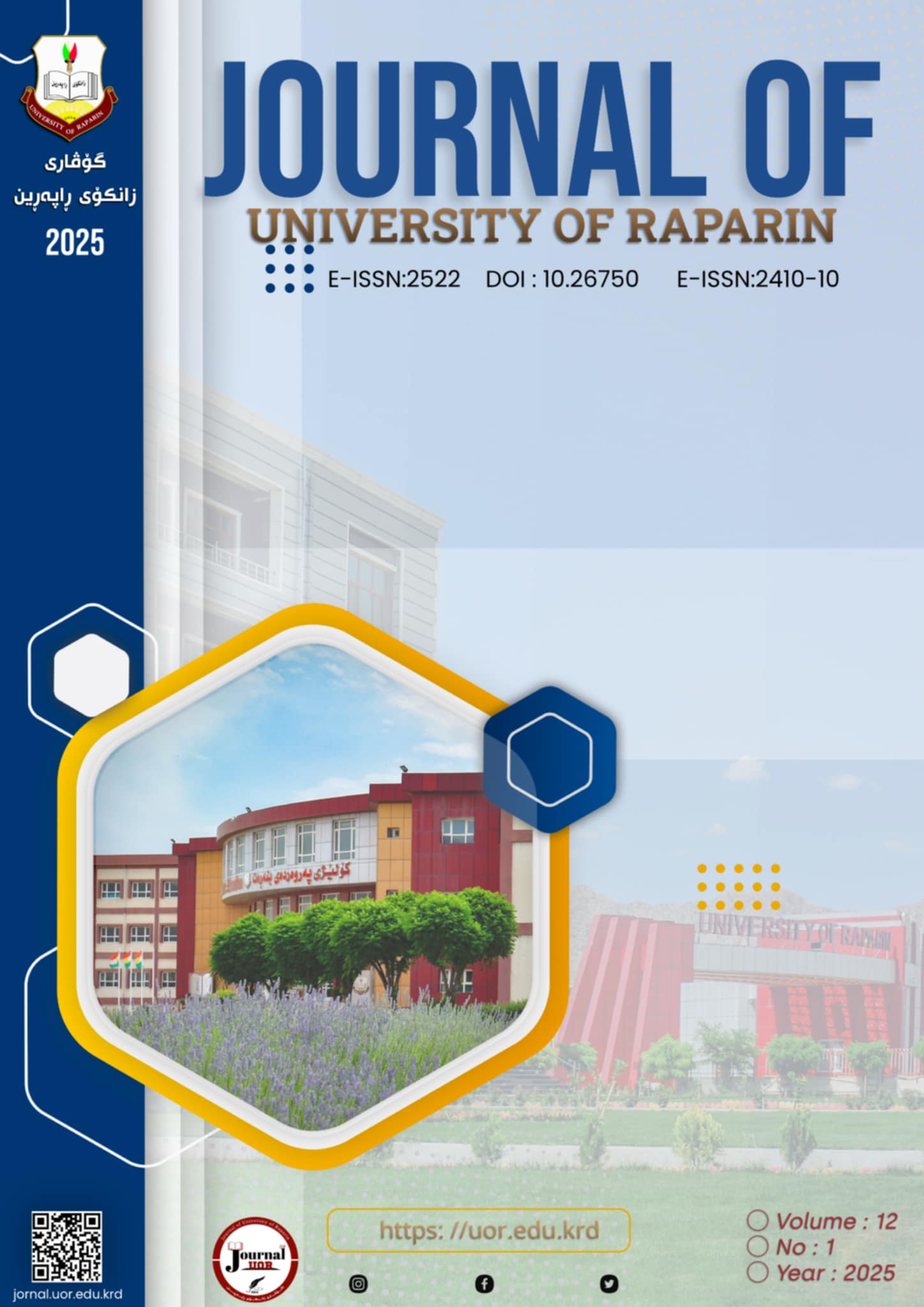Abstract
The Kurdish variety, spoken in the town of Kifri, in the southern part of Kurdistan Region (Garmian), has undergone changes as a result of borrowing words from other languages such as Arabic, Persian, and Turkmen. This paper deals, in particular, with words taken from the Turkmani language, and this is due to the coexistence of Kurdish speakers with people speaking this language in the area. The influx of words from this language into this Kurdish variety has caused enormous changes in the lexical structure of the language. The aim of the work is to highlight the effect of this social coexistence on this variety. This is done by selecting a number of Turkmen loan words in the language, and conducting a morpho-semantic analysis of them with reference to some phonological changes they have undergone in the process of borrowing. The research hypothesizes that the Turkmen loan words are expected to have undergone semantic, morphological, and phonological changes due to their adaptation to the host language system. The study adopts a qualitative method to carry out the analysis of the samples in the light of the aspects mentioned. The conclusions show that the analyzed samples have exhibited changes in the sphere of lexis and this has had no effect on the core structural system of the host language. Besides, the research has unraveled proportional discrepancies among the loan words in relation to the changes they have encountered. The significance of the study can be said to lie in its advantage for etymological studies that aim at investigating the origin of certain vocabularies in a given language. Similar studies can be suggested to quest for other linguistic aspects of borrowed words in given languages.
References
Brooks, N.(1975). The Meaning of Audiolingual. The Modern Language Journal, 54, 234-40.
Darian, S. (1969). Backgrounds of Modern Language Teaching: Sweet, Jespersen, and
Palmer. The Modern Language Journal 53, 545-50.
Davies and Elder (eds.) (2006). The Handbook of Applied Linguistics. Oxford: Blackwell
Publishing.
Finch, G. (2005). Key Concepts in Language and Linguistics. London: Palgrave Macmillan.
Herrell, A. L. and Jordan, M. (2008). Strategies for Teaching English Language Learners.
New Jersey: Pearson Prentice Hall.
Hunston, S. and Oakey, D. (2010). Introducing Applied Linguistics: Concepts and Skills.
London: Routledge.
Littlewood, W. (2006). Second Language Learning. In Davies and Elder (eds.), The
Handbook of Applied Linguistics. Oxford: Blackwell Publishing.
Martin, D. (2000). How to be an Effective FLE Teacher. Japan: EFL Press.
Pit Corder, S. (1973). Introducing Applied Linguistics. England: Penguin Books.
van Quirsouw, R. R. (1984). (trans.). Applied Linguistics and the Learning and Teaching of
Foreign Languages. London: Edward Arnold.
Rivers, W. (1964). The Psychologist and the Foreign-Language Teacher. Chicago: Chicago
University Press.
Strevens, P. (1972). Language Teaching. In Sebeok, T. (ed.), Current Trends in Linguistics,
Vol. 9, 702-32.
Titone, R. (1968). Teaching Foreign Language: A Historical Sketch. New York: Prentice
Hall
Widdowson, H. G. (2000). On the Limitations of Linguistics Applied. Applied Linguistics,
(1), 3-25.

This work is licensed under a Creative Commons Attribution-NonCommercial-NoDerivatives 4.0 International License.
Copyright (c) 2024 Journal of University of Raparin

